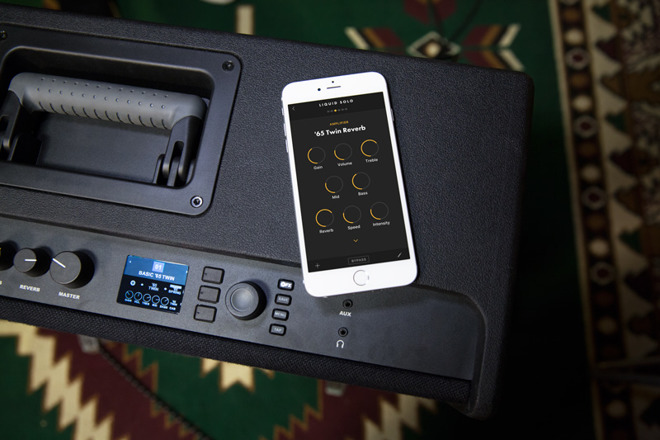Fender intros iPhone-connected Mustang GT guitar amps with preset sharing
Fender on Friday launched a new line of guitar amps, the Mustang GT series, notable for including Wi-Fi and Bluetooth -- which not only enables streaming music, but changing up presets via an associated iPhone and Android app, Fender Tone.

While the app offers preset creation, musicians can also access presets from Fender, an online community, and celebrities from bands like Anthrax and the Red Hot Chili Peppers. Any changes are transmitted in real-time, and setlists can be generated for live performances.
The amps also feature USB connections, and a full set of onboard manual controls when a phone isn't nearby or convenient.
Three models are available. The GT 40 is $249.99 and rated at 40 watts, intended mainly for home or studio use. The GT 100 and GT 200 cost $399.99 and $599.99 respectively, but are powerful enough to be used in stage shows.
The GT 200 bundles in a four-button footswitch that costs an extra $79.99 for the other models.
Like other instrument makers, Fender has been slowly adapting to world of phones and tablets. Another iPhone app, Fender Tune, offers manual and automatic tuning options, including support for acoustic and bass guitars, as well as unorthodox tunings like Drop D.

While the app offers preset creation, musicians can also access presets from Fender, an online community, and celebrities from bands like Anthrax and the Red Hot Chili Peppers. Any changes are transmitted in real-time, and setlists can be generated for live performances.
The amps also feature USB connections, and a full set of onboard manual controls when a phone isn't nearby or convenient.
Three models are available. The GT 40 is $249.99 and rated at 40 watts, intended mainly for home or studio use. The GT 100 and GT 200 cost $399.99 and $599.99 respectively, but are powerful enough to be used in stage shows.
The GT 200 bundles in a four-button footswitch that costs an extra $79.99 for the other models.
Like other instrument makers, Fender has been slowly adapting to world of phones and tablets. Another iPhone app, Fender Tune, offers manual and automatic tuning options, including support for acoustic and bass guitars, as well as unorthodox tunings like Drop D.

Comments
Also, it seems like the market has largely abandoned stereo (aside from headphone/earbud use). Don't we care about stereo anymore?
And since there are no standards anymore, those wattage ratings are most likely meaningless. Wattage ratings for amplifiers only make sense if they're accompanied by a frequency response +/- a given number of db and at a given distortion level. But even ignoring frequency response and distortion, they can give a wattage number that's actually peak to peak. So 100 watts peak-to-peak is 50 watts peak, which is 35 watts RMS. But then you measure it at 3% distortion and it falls to 20 watts and at 1% it falls to 13 watts (although many guitar players like the sound of that distortion because it can generate square waves). Etc. And for an instrument amp, it's not the wattage that counts, but SPL. It's even worse for A/V receivers because the wattage ratings are usually reported with only one channel driven instead of all channels driven.
I moved back to the city within the year.
Which makes me wonder why this doesn't include an out of the box wireless guitar-to-amp solution.
What photograph?
Natural talent, very hard work, balls, innovativion, song writing, singular focus, learning the craft. I'm a dinosaur, but that's what sets great apart from gearheads.
True. But you've gotta admit, the new toys are fun.